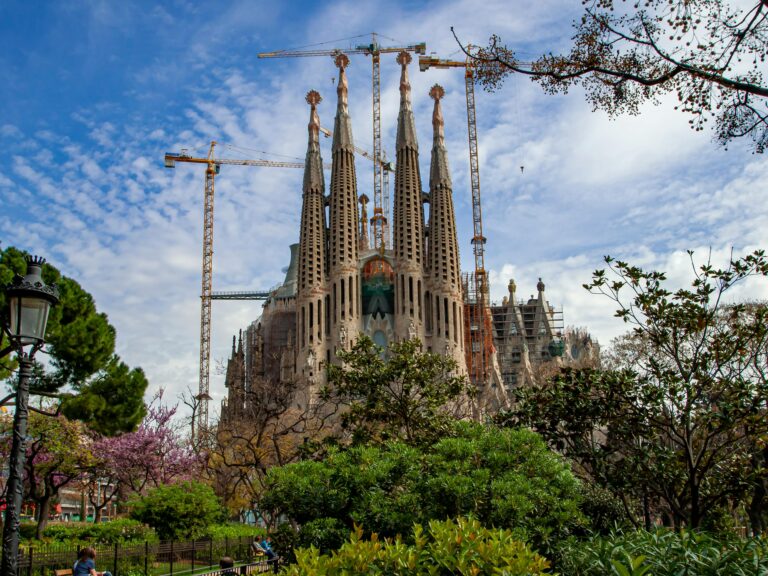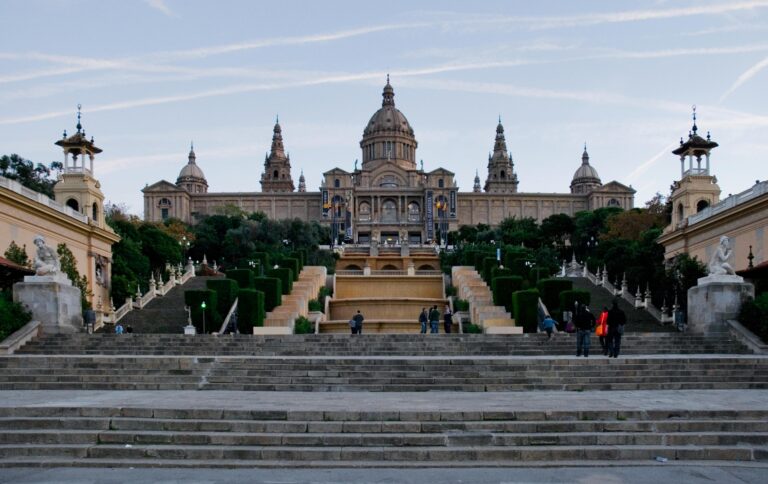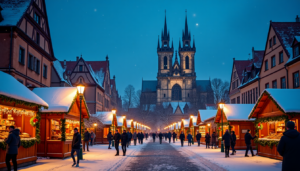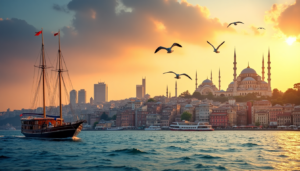Barcelona welcomes 32 million visitors each year, and you have just 48 hours to experience its magic. This enchanting city blends Gothic alleys with modernist masterpieces, creating an exciting challenge for time-pressed travelers.
The Sagrada Familia and Park Güell draw massive crowds, but Barcelona’s soul lies in its hidden corners. Quiet tapas bars nestle in the Gothic Quarter’s maze-like streets, and remarkable architectural treasures await your discovery. Barcelona’s charm extends way beyond the reach of standard tourist routes. The city captivates visitors with its stunning architecture, rich food culture, and deep-rooted heritage. This weekend guide reveals the perfect mix of iconic landmarks and local secrets that make Barcelona a unique destination.
Planning Your Perfect Barcelona Weekend
Smart planning helps you experience the best of Barcelona during your weekend adventure. Here’s a guide that breaks down everything you need to know about Barcelona, Spain.
Best time to visit Barcelona
Barcelona enjoys sunshine more than 300 days each year. The best times to visit are spring (March-May) and fall (September-November). These seasons give you pleasant weather and smaller crowds.
Each prime season brings unique experiences:
Getting around the city
The city’s complete public transport network makes it easy to explore Barcelona. You can use different types of transport with just one ticket thanks to the integrated fare system. The Hola Barcelona travel card is perfect for weekend visitors. It gives you unlimited rides and airport transfers.
You can move around using:
Weekend trip essentials
Pack like a local to make the most of your Barcelona trip. Your weekend bag should be practical and versatile. Summer temperatures can be high, and winter nights can drop to 4°C.
Pack these items:
Check our post about 10 Must-Have Travel Accessories to Make Your Trip Stress-Free
Barcelona locals dress up for dinner and nightlife, so pack some nice evening clothes. Religious sites like the Sagrada Família need modest clothing that covers shoulders and knees.
Beach visitors in warm months should bring swimsuits and cover-ups. Many restaurants near the beach let you come straight from the sand if you’re properly covered.
Day 1: Essential Barcelona Landmarks
Barcelona’s architectural treasures span centuries, and you can see three iconic landmarks on your first day. Here’s a well-planned day of sightseeing that takes you through the city’s best spots.
Morning at Sagrada Familia

Your day starts early at Antoni Gaudí’s masterpiece, the Sagrada Familia. The basilica welcomes visitors from 9:00 AM, which gives you the best chance to avoid crowds. Tourist numbers go up substantially during peak season (May-September), so early morning visits make the most sense.
Essential Visiting Tips:
Afternoon in the Gothic Quarter

The medieval heart of Barcelona awaits you after lunch. The Gothic Quarter (Barri Gòtic) has more than 2,000 years of history. Make sure to see the magnificent Barcelona Cathedral – many tourists mix it up with Sagrada Familia.
The labyrinthine streets lead you to the historic Plaça del Rei, where King Ferdinand welcomed Christopher Columbus after his American voyage. These narrow medieval roads tell tales from ancient Roman walls to today’s boutique shops.
Evening at Las Ramblas

Las Ramblas, Barcelona’s famous boulevard, comes alive as daylight fades. Saints inspired the names of different sections like Santa Mònica and Sant Josep (also called La Rambla dels Flors).
Take time to visit Plaça Reial, one of Barcelona’s most beautiful squares with its palm trees and elegant architecture. Street performers and human statues fill the area with energy, though restaurants here mainly cater to tourists.
The side streets are your best bet for dinner rather than Las Ramblas itself. Still, if you want that classic tourist experience, grab a seat at a Las Ramblas café with sangria and watch the world go by.
PRO TIP
Watch your belongings carefully in the evening when the boulevard gets busy. The area is safe overall, but pickpockets often target tourists.
Day 1 Hidden Gems
Barcelona’s true character lies in its hidden corners, beyond the iconic landmarks you saw earlier today. Most tourists miss these secret spots while they visit the city’s famous attractions.
Secret spots near major attractions
The tranquil Plaça Sant Felipe Neri sits just steps away from the busy Gothic Quarter. This secluded square tells a moving story of Barcelona’s past. Its walls still bear the marks of Spanish Civil War bombings. A peaceful fountain and baroque church create a striking contrast to the square’s historical significance.
Art lovers will appreciate the World Begins with Every Kiss mural from 2014. This eye-catching mosaic shows two people kissing through thousands of tiny photographs.
Local restaurants worth visiting
Las Ramblas bustles with tourist spots, but authentic food experiences await in nearby alleys. Bar La Plata has stood since 1945 and gives you a taste of traditional Barcelona dining. El Xampanyet provides a truly local experience with its house-made sparkling cava.
Some hidden culinary gems you should try:
- Los Caracoles – A family-founded restaurant with nearly 190 years of history
- Ocaña – Just off Las Ramblas, serving Catalan cuisine with Asian and Moroccan influences
- Bar Pinotxo – Known for traditional recipes like chickpeas with black pudding
Evening entertainment options
Barcelona shows its vibrant evening character as day turns to night. The Antic Teatre sits hidden in Born district and offers a unique cultural experience in its garden bar setting. This bohemian venue hosts shows by independent artists with surprisingly affordable prices – beers for €2 and vermut for €3.
Bunkers del Carmel provides an unforgettable sunset experience. This former anti-aircraft fortification now serves as a peaceful lookout with panoramic views of the city. You can see the Sagrada Família and the Mediterranean Sea from here. Bring a bottle of local cava and join locals and adventurous travelers for one of Barcelona’s most authentic evening experiences.
Summer visitors should plan around local street festivals or festes majors. These neighborhood celebrations show genuine Catalan culture with live music, traditional dances, and local food stalls.
PRO TIP
Barcelona runs on a later schedule than most European cities. Locals usually start their evening at 8 PM, and restaurants serve dinner until midnight.
Day 2: Barcelona’s Cultural Heritage
Your second day takes you deeper into Barcelona’s cultural heart. The city’s modernist wonders and world-class museums await your visit.
Park Güell and surroundings

Park Güell stands as one of Barcelona’s extraordinary attractions. This architectural wonderland spans 18 hectares of hilly terrain. The park started as a planned residential community for wealthy residents and now draws about 12 million visitors each year.
Gaudí’s innovative trencadís technique shines throughout the park. This unique style creates mosaics from broken ceramic pieces. The famous salamander sculpture and sweeping terrace showcase this artistry beautifully. The 110-meter-long terrace offers stunning views of Barcelona.
VISITING TIP
The smallest crowds appear between 9:30 AM to 11 AM on weekdays.
Modernist architecture route
Barcelona leads Europe in art nouveau architecture with its unique style called Modernisme. The city expanded in 1859, creating perfect conditions for innovative architecture. This movement flourished in the area known as the ‘Quadrat d’Or’ (Golden Square).
The famous ‘Mansana de la Discòrdia’ (Block of Discord) shows off three architectural giants’ distinctive styles. Lluís Domènech i Montaner, Josep Puig i Cadafalch, and Antoni Gaudí designed the houses of Lleó Morera, Amatller, and Batlló respectively.
The Hospital de la Santa Creu i Sant Pau ranks among nine modernist masterpieces in Barcelona with UNESCO World Heritage status.
Barcelona’s museum highlights

The city’s museums tell fascinating stories through art and history. The Museu Nacional d’Art de Catalunya (MNAC) stands as a cultural cornerstone with its collection featuring:
Art lovers flock to the MACBA (Barcelona Museum of Contemporary Art). This striking white building, designed by Richard Meier, houses innovative exhibitions. The Joan Miró Foundation sits atop Montjuïc hill. It displays 217 paintings, 178 sculptures, and roughly 8,000 drawings by the celebrated artist.
CULTURAL TIP
Museums are quieter during weekday afternoons. Many offer discounted or free entry at specific times.
Day 2 Off-the-Beaten-Path
Barcelona’s authentic soul lives in its charming neighborhoods, bustling local markets, and hidden culinary gems. The city’s true pulse beats strongest away from typical tourist spots.
Lesser-known neighborhoods
Gràcia, a bohemian district, welcomes visitors with its artistic spirit and village-like charm. This neighborhood keeps its unique character through traffic-free streets and colorful buildings. Locals gather at Plaça del Sol to enjoy their afternoon caña (small beer) and share neighborhood stories.
Poblenou has evolved from its industrial roots into Barcelona’s creative center. Art galleries and design workshops now fill the old factory buildings in this vibrant area. A morning walk along Rambla del Poblenou leads you past outdoor cafés and straight to the peaceful Bogatell Beach.
Sarrià, which joined Barcelona in 1921, stands out with its upscale atmosphere. The neighborhood’s Bar Tomàs has earned fame for what many consider the city’s best patatas bravas.
Local markets and shops
The tourist crowds at La Boqueria shouldn’t stop you from experiencing these authentic local markets:
- Mercat de Sant Antoni has gotten a fresh look. This diverse market sells fresh produce and quality meats, while Sundays bring book and coin collectors
- Mercat del Ninot draws locals with excellent produce and specialty butchers who take pride in their Jabugo ham
- Mercat de Santa Caterina pairs locally sourced food with eye-catching architecture under its mosaic roof
- Mercat dels Encants, Barcelona’s largest flea market, rewards early birds with great deals on antiques and vintage clothing.
Authentic dining experiences
La Pubilla, a cozy Gràcia restaurant, serves traditional Catalan dishes. Their signature esmorzar de forquilla (fork breakfast) dates back to the late 19th century, a filling meal that factory workers relied on.
Locals pack Tramendu Bar’s marble counter each evening to enjoy specialties like capipota (seasoned pork head and feet) and spicy snails. Can Culleretes, 237 years old, maintains its reputation for classic dishes like cannelloni and Crema Catalana.
Casa Amàlia has stuck to its principles since 1950, focusing on quality ingredients and timeless recipes. The best time to eat like a local is between 1:00 PM and 2:00 PM, just before the tourist crowds arrive.
Barcelona’s dining schedule runs late – locals usually start dinner after 9:00 PM. This timing lets you experience the city’s natural rhythm and understand why Barcelona’s food scene gets worldwide recognition.
Practical Weekend Tips
A successful Barcelona weekend needs more than just a list of places to visit – you need to know how to guide through the city efficiently. Let’s head over to practical strategies that will help you make the most of your 48 hours in this vibrant city.
Time-saving strategies
Smart timing can reshape the scene of your Barcelona experience. Tickets for major attractions like Sagrada Familia sell out at least two weeks ahead. Here are five key ways to save time:
- Visit popular attractions during off-peak hours (early morning or late afternoon)
- Plan your itinerary by geographical proximity
- Pre-book all major attraction tickets
- Download offline maps before your trip
- Book guided tours for complex sites
Note that most local museums are free on the first Monday each month, and places like the Picasso Museum cost nothing on Thursdays after 6 PM. But these free periods draw larger crowds, so plan accordingly.
Skip-the-line recommendations
Lines at Barcelona’s top attractions can eat up precious hours of your weekend. Skip-the-line tickets are a great way to get more time at most major sites, and they cost just a bit more than standard entry.
Key skip-the-line options to think about:
- Sagrada Familia (Book at least two weeks ahead)
- Park Güell (Reserve a few days in advance)
- Casa Batlló
- La Pedrera
- Barcelona Aquarium
The Barcelona Card gives you the most flexibility with skip-the-line access to many attractions plus unlimited public transport. If you plan to visit multiple Gaudí sites, pick up the Barcelona Essentials Pass that blends skip-the-line access with transportation perks.
Transportation hacks
Barcelona’s public transport network serves the city well, and knowing its ins and outs saves time and money. The metro system has 12 lines that reach most tourist spots, with trains running every 2-3 minutes during rush hours.
Weekend visitors should grab the Hola BCN travel card for the best value. It gives unlimited access to:
Your airport transfer options include:
The FreeNow app helps you book reliable taxi services. This local Uber alternative offers fixed rates and credit card payments – perfect when public transport isn’t your best choice.
The city center’s attractions sit close to each other, making walking an excellent option. Barcelona welcomes walkers, and you might stumble upon hidden gems and local spots you’d miss on public transport.
Conclusion
Barcelona’s charming streets pack countless experiences, from Sagrada Familia’s soaring spires to Gràcia’s hidden tapas bars. A perfect weekend awaits you with smart choices about attraction timing and neighborhood exploration.
Barcelona runs on its own schedule with late dinners, afternoon siestas, and a relaxed Mediterranean pace. Major attractions need advance planning, yet the Gothic Quarter’s winding alleys and Poblenou’s creative spaces invite spontaneous exploration. This captivating city makes your weekend feel complete while tempting you to return for more adventures.





